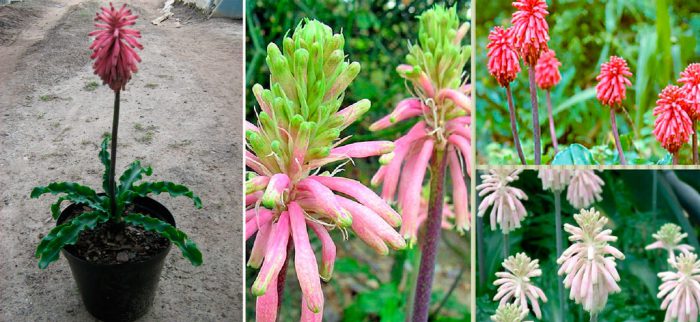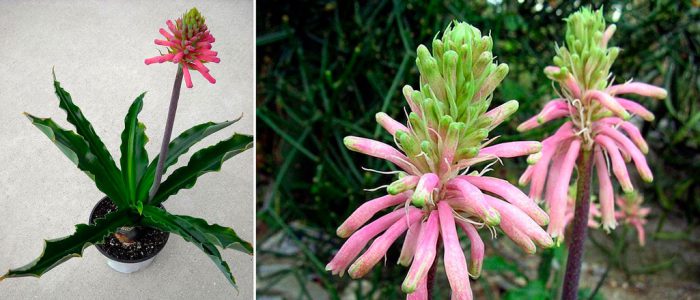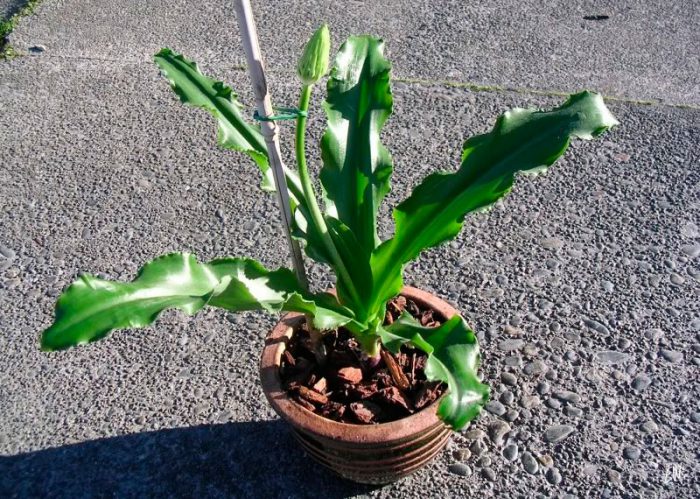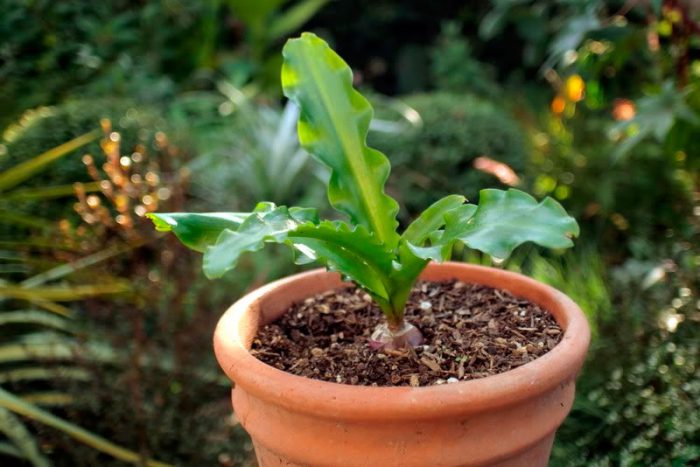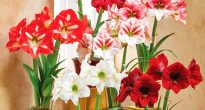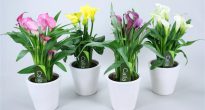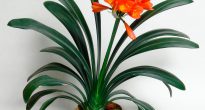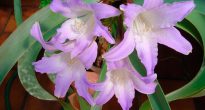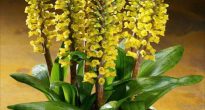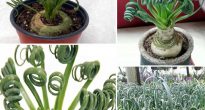A bulbous plant like weltheimia (Veltheimia) is perennial. It is directly related to the hyacinth family. This genus unites only a few species. In the wild, such a flower can be found in South Africa. It grows in its homeland in shaded areas on the sea coasts or hilly areas.
This plant is not very large. Green belt-like leaves are collected in an outlet, and their edges are slightly wavy.
Peduncle formation occurs in the first weeks of winter and grows very quickly. The inflorescence consists of drooping pink flowers. They have a rather unusual shape and are very similar to fireworks, which is why Weltheimia is sometimes called a "winter rocket". Narrow-bell-shaped flowers do not fade for 8-12 weeks.
This flower is rarely grown indoors. It blooms only when the room temperature is maintained at 10-14 degrees. And in winter, the temperature in the living room is slightly higher. This plant feels great in a cool winter garden. It can also be grown on a closed loggia, and if it is cool there in winter, then the weltheimia will bloom.
Content
Weltheimia care at home
Illumination
This plant simply needs direct rays of the sun. However, this is only during the warm season. In the autumn-winter period, it can do without them. After the flower has a dormant period, it can be moved to a darkened place.
Temperature regime
The correct temperature regime determines how successful the cultivation will be, as well as whether flowering will occur. Weltheimia should be kept in a cool place. After new leaves begin to appear (most often this happens in September), the temperature in the room is lowered to 20 degrees or even lower. This is a perfectly normal temperature for early autumn. You can place the plant on the balcony during this time. However, in order for it to begin to bloom, the temperature by November should become much lower, namely, 10-14 degrees. It should be borne in mind that the decrease in temperature should be gradual. Flowering lasts throughout the winter if the flower is kept at a temperature of 10 degrees.
Humidity
Not picky about air humidity.
Watering features
Watering should be moderate from the second half of September until the dormant period. Be careful not to get liquid on the bulb while watering.It is necessary to water weltheimia until all the leaves are dry. After the dormant period is over, and young leaves begin to grow at the flower, it must be watered again.
Fertilizer
Fertilize the plant once every 4 weeks after the start of the growth of young foliage. To do this, use ½ part of the recommended dose of fertilizer for flowering plants.
How to transplant
The transplant is carried out immediately after the rest period ends. The plant is transplanted infrequently, or rather, only once every 2 or 3 years. When transplanting, it is worth considering that 1/3 of the onion should remain not buried (rise above the soil).
Zemlsmes
You can make a suitable soil mixture yourself by combining leaf and turf soil with sand in a 1: 1: 1 ratio. Flower pots should be wide.
Dormant period
When the weltheimia fades, it will gradually enter a dormant period. In the last spring weeks, the leaves of this plant dry up. Without pulling the bulb out of the flower pot, it is transferred to a shaded place. With the onset of September, young leaves begin to appear at the plant, and at this time it must be rearranged to a bright place, or better sunny.
How to propagate
This flower can be propagated using seeds (they can be set if artificial pollination is carried out), as well as using young bulbs.
Separation of young bulbs is carried out in September, when the plant is transplanted. Planting is done in loose soil. They should be deepened slightly more than the mother's bulb. But at the same time, make sure that the upper part rises above the substrate.
Possible difficulties
Flowering does not occur - the temperature is above normal.

